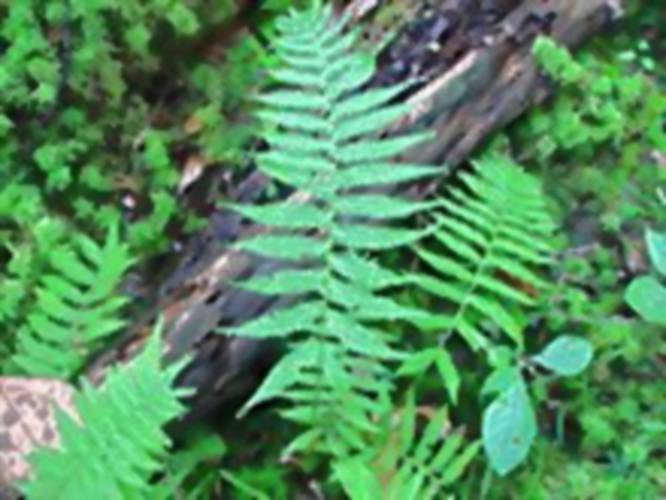My Turn: Discover and protect a Greenfield treasure

WIKIPEDIA WIKIPEDIA
| Published: 03-27-2024 4:43 PM |
There is hidden treasure right here in Greenfield. Years ago, the treasure was in plain sight. Now it is practically unrecognizable except in the early spring. I discovered small nuggets of the treasure when Ted Watt, well-known naturalist and educator, phoned. “Get over to the Green River Swimming Area to see the Dutchman’s Breeches! They’re spectacular!” It was mid-April. Spring ephemerals were just coming into their glory. Spring ephemerals are wildflowers that sprout, bloom and die sometimes within only a few days. And there they were, a hillside of beautiful, delicate flowers brightening the forest. I was captured.
Returning to this forest became a habit. I had already fallen in love with woodland flowers. But this forest was unique in the variety and abundance of wildflowers in such a small area. Without effort I could find squirrel corn, blue cohosh, and spring beauties. Trillium grew knee high. Clumps of hepatica and wild ginger were plentiful. Simultaneously, I was learning about the importance of local, native plant communities. And, again, here they were, growing naturally, on their own without planning or prodding from humans. What an incredible treasure!
As my joy in discovering more native, woodland plants increased, so did my despair over seeing the native forest disappear under invasive plants. By late April, young Japanese knotweed and goutweed began crowding out trout lilies, jack-in-the pulpit, tooth-wort and foam flower. Soon knotweed was five, six, seven feet tall, blocking hiking trails. Thorny branches of multi-flora rose grabbed clothing and the skin of passing hikers. Bittersweet continued its strangling climb into whatever bush or tree it could reach. By mid-June, many of the native plant treasures were barely visible.
In March 2021, I asked my partner to experiment with me. We measured a 25-square-foot plot in the middle of what would soon become patch of seven-foot-tall knotweed. Every Monday until mid-July, we spent 45 minute cutting the stems of every knotweed plant growing in our plot. By August, the stems of the persistent plants were short, thin and weak. Other plants began to appear — ferns, jewelweed, grass, elm. We were inspired and hopeful.
Actually, we had used this technique of carbohydrate starvation on a piece of Ozark Mountain top land in the 1990s. A soil conservation agent said we could revitalize our worn out pasture by repeatedly removing leaves from unwanted plants, denying nourishment to their roots, thereby causing death by starvation. So we got to work. We bush-hogged 2-3 times per growing season for three consecutive years. By the second year, coreopsis and butterfly weed appeared here and there. We mowed around them. Then false indigo, ladies tresses and green milkweed appeared. We mowed around them. The number and kinds of wildflowers continued increasing, as did the insects and birds they attracted. And all this came from seeds that were already in the soil waiting for room to sprout.
Could this happen in Greenfield? Could we gently, without chemicals and with minimal disturbance to the soil, begin to eliminate invasive plants, and enable a rich seed bank to germinate and flourish within our natural forest? We needed help from people who would be patient and persistent over numerous years of cutting back unwanted invasive plants. We needed people who would feel rewarded by observing and learning about the native plant communities. And we needed permission to take on this task in this forest. After two and a half years permission was granted.
In October 2023, a small group of people began removing invasive plants from the forest beside the Green River Swimming picnic area. Throughout the winter, we focused on cutting woody plants — honeysuckle, roses, bittersweet. Now we are getting ready to take on herbaceous plants — knotweed, goutweed, dame’s rocket, garlic mustard and more. Even more immediately, we are getting ready to share this story and, hopefully, this responsibility with you.
On Monday, April 8, at 6 p.m., in the Greenfield Public Library, we will show pictures, describe what we have learned and how we plan to move forward. We hope you will join us in the large community room. One of our guiding principles is to make decisions based on what we learn from science, the land, and the plants. Come, explore how we can move forward together, how you can be actively involved in identifying plants, and cutting back invasives to make room for the native plants and seeds already existing in the forest soil.
Article continues after...
Yesterday's Most Read Articles
Wisty Rorabacher is a member of Floodplain Forest Restoration and lives in Greenfield.

